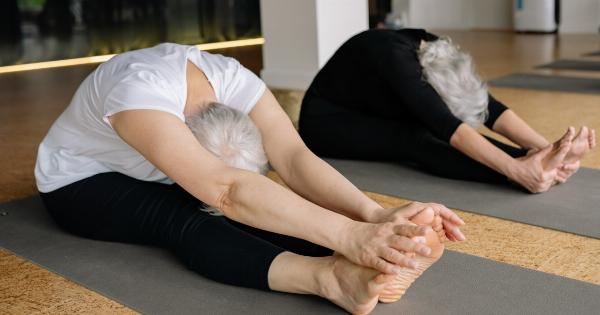Incontinence is a common issue among many people, particularly as they age. While there are many medical treatments available, there are also simple exercises that can help combat incontinence.
In this article, we’ll discuss some of the best exercises to help you gain control over your bladder and reduce the likelihood of accidents.
1. Kegels
Kegels are the most well-known exercises for incontinence. They work by strengthening the muscles that support your bladder, urethra, and rectum.
To do a Kegel, squeeze the muscles that you would use to hold in urine, then hold that contraction for three seconds. Release and repeat. Work up to 10 repetitions, 3 times a day.
2. Pelvic Floor Exercises
Pelvic floor exercises involve squeezing the muscles around the vagina and anus. To do them, tighten and lift the muscles as if you are stopping urine flow, then release and repeat. Work up to holding each lift for 10 seconds, then release for 10 seconds.
Repeat 10 times.
3. Squats
Squats strengthen the muscles in the legs and pelvic region. Start with your feet shoulder-width apart, then lower your body as if you are sitting in a chair. Keep your back straight and your knees over your ankles.
Return to a standing position and repeat 10 times.
4. Bridges
Bridges also work the muscles in the legs and pelvic region. Lie flat on your back with your knees bent and feet flat on the ground.
Tighten your buttocks and lift your hips off the ground until your body forms a straight line from your knees to your shoulders. Hold for 5 seconds, then lower and repeat 10 times.
5. Deadlifts
Deadlifts are another exercise that works the muscles in the legs and pelvic region. Stand with your feet shoulder-width apart and hold a weight in each hand. Bend your knees and lower your body as if you are picking something up off the ground.
Keep your back straight and your weight in your heels. Return to a standing position and repeat 10 times.
6. Yoga
Yoga can help improve your overall physical and mental health, which can in turn help with incontinence. Certain yoga poses, such as the pelvic tilt and the downward dog, can help strengthen the pelvic floor muscles.
Ask your yoga instructor for specific poses that can help combat incontinence.
7. Pilates
Similar to yoga, Pilates exercises can help strengthen the muscles in the pelvic region. The Pilates hundred, the spine stretch, and the pelvic curl are all good exercises for incontinence.
Ask your Pilates instructor for specific exercises that can help with your specific symptoms.
8. Swimming
Swimming is a low-impact exercise that can help strengthen the muscles throughout your body, including your pelvic floor muscles. The resistance of the water can also help improve your strength more quickly.
Try swimming laps or water aerobics for a good workout that can help combat incontinence.
9. Walking
Walking is a great way to get exercise and improve your overall health. It’s also a low-impact option that won’t put too much stress on your pelvic region.
Try walking for 30 minutes each day to help improve your muscle tone and reduce your risk of incontinence.
10. Cycling
Cycling is another low-impact exercise that can help improve your overall fitness, including the muscles in your pelvic region. Consider cycling for 30 minutes a day, either outdoors or on a stationary bike, to help combat incontinence.
Conclusion
Incontinence can be embarrassing and uncomfortable, but there are simple exercises you can do to help improve your muscle tone and reduce your risk of accidents.
Try incorporating these exercises into your daily routine to help combat incontinence and improve your overall health.






























